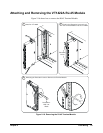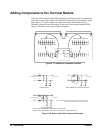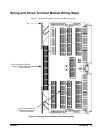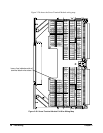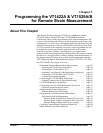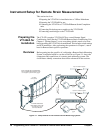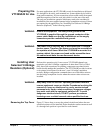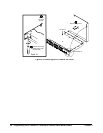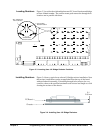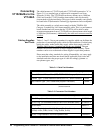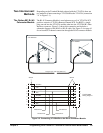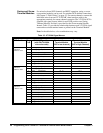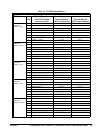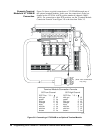
Programming the VT1422A & VT1529A/B for Remote Strain Measurement 59Chapter 3
Preparing the
VT1529A/B for Use
For most applications, the VT1529A/B is ready for installation as delivered.
It is designed to be easily rack mounted in a system cabinet by its built-in
front panel extensions. All user connection are accessible on the front panel
with the exception of the line-cord jack which is on the rear of the unit.
The only pre-installation operation which may need to be considered is
installation of the user supplied quarter-bridge completion resistors. If these
are required by the application, see “Installing User Selected 1/4 Bridge
Resistors (Optional)” in the following section.
WARNING Ground the equipment: The safety Earth ground for the
VT1529A/B is supplied through the ground conductor of the
power cable. Make sure that the installation’s ac line supply
connectors provide a suitable Earth ground.
WARNING The power cord is the only way to disconnect the VT1529A/B
from ac power. Therefore, the power cord must be accessible to
the operator at all times. When the VT1529A/B is mounted in a
system cabinet, the power cord need not be accessible since
the cabinet must have its own disconnect device.
Installing User
Selected 1/4 Bridge
Resistors (Optional)
Perform this operation only if one or more VT1529A/B channels are
required to provide 1/4 Bridge completion of other than 120
Ω or 350 Ω.
Only those with experience in soldering components on printed circuit
boards should attempt this installation. The VT1529A/B provides locations
on its printed circuit board for the user’s own 1/4 bridge completion
resistors. Bridge configuration commands then can switch these resistors
into the bridge completion circuits where the custom value resistors are
installed.
WARNING Keep away from live circuits: Operating personnel must not
remove equipment covers or shields. Procedures involving the
removal of covers or shields are for use by service-trained
personnel only. Under certain conditions, dangerous voltages
may exist even with the equipment switched off. To avoid
dangerous electrical shock, DO NOT perform procedures
involving cover or shield removal unless qualified to do so.
Removing the Top Cover Figure 3-2 shows how to access the printed circuit board where the user
specified resistors will be installed. Notice that both a surface-mount as well
as a through-hole position is provided for each channel.



